The third edition of TEOSS brought to the scenic Serranía de Cuenca. In fact, this was the scenario of the second introductory workshop about orthopteran bioacoustics delivered in Spanish. Moreover, with mild summer weather, breathtaking mountain landscapes, and several Iberian endemic species, the setting could not have been better for an immersive field experience.
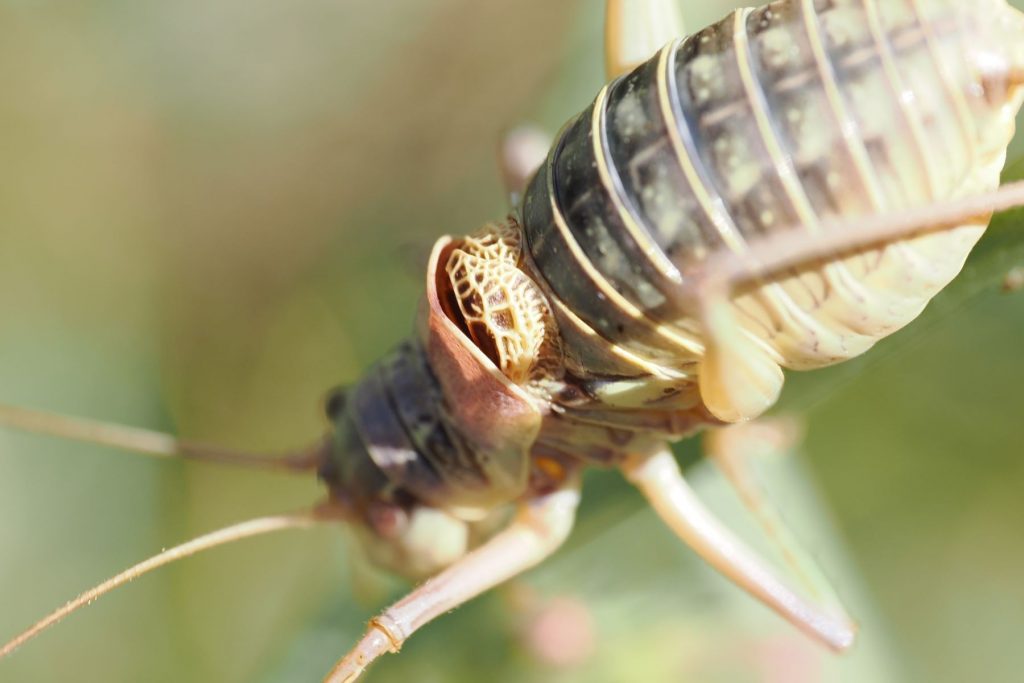
A group of 15 participants gathered from across Spain—representing regions such as Madrid, Galicia, the Balearic Islands, Cuenca, Toledo, Zamora, and Huesca. Over the course of this TEOSS workshop, they alternated between fieldwork, theory, and data analysis, following the “learn by doing” approach. Each participant not only gained a foundation in orthopteran ecology but also contributed valuable recordings, which were later processed and shared on the Xeno-Canto platform.
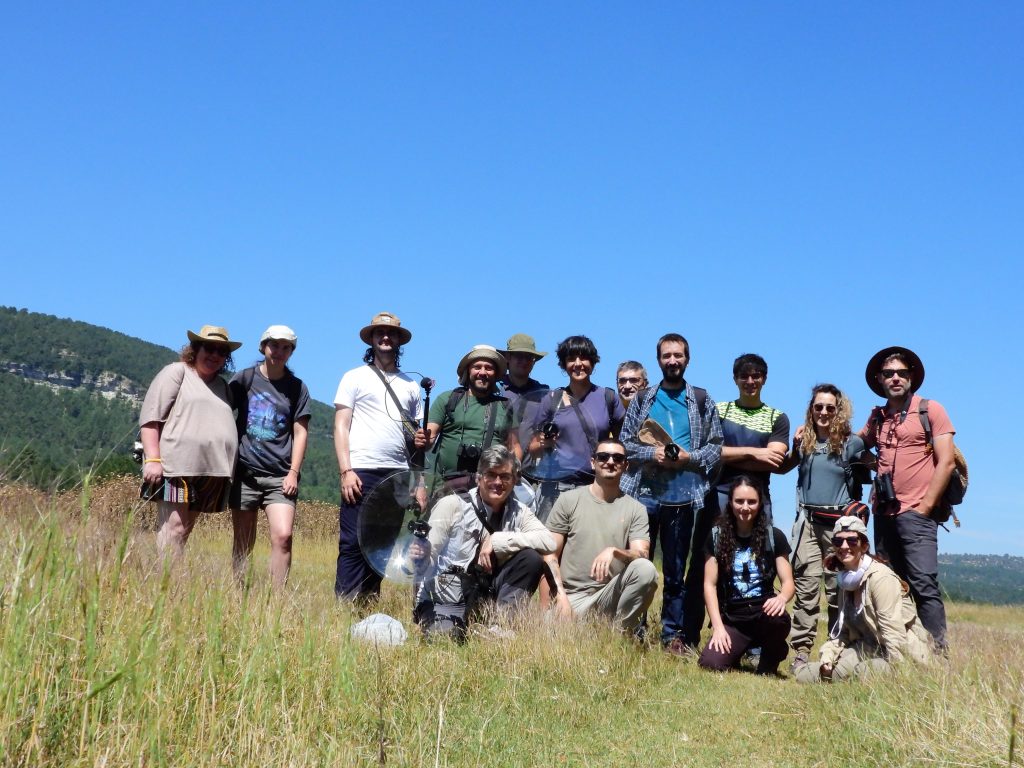
Day 1: Arrival and First Encounters
They settled into El Cerviñuelo, a beautifully restored forester’s lodge near Las Majadas, surrounded by Mediterranean forest at 1,400 meters above sea level. From the very beginning, wildlife welcomed the workshop—midwife toads calling in the evening, ocellated lizards basking on rocks, and livestock grazing nearby.
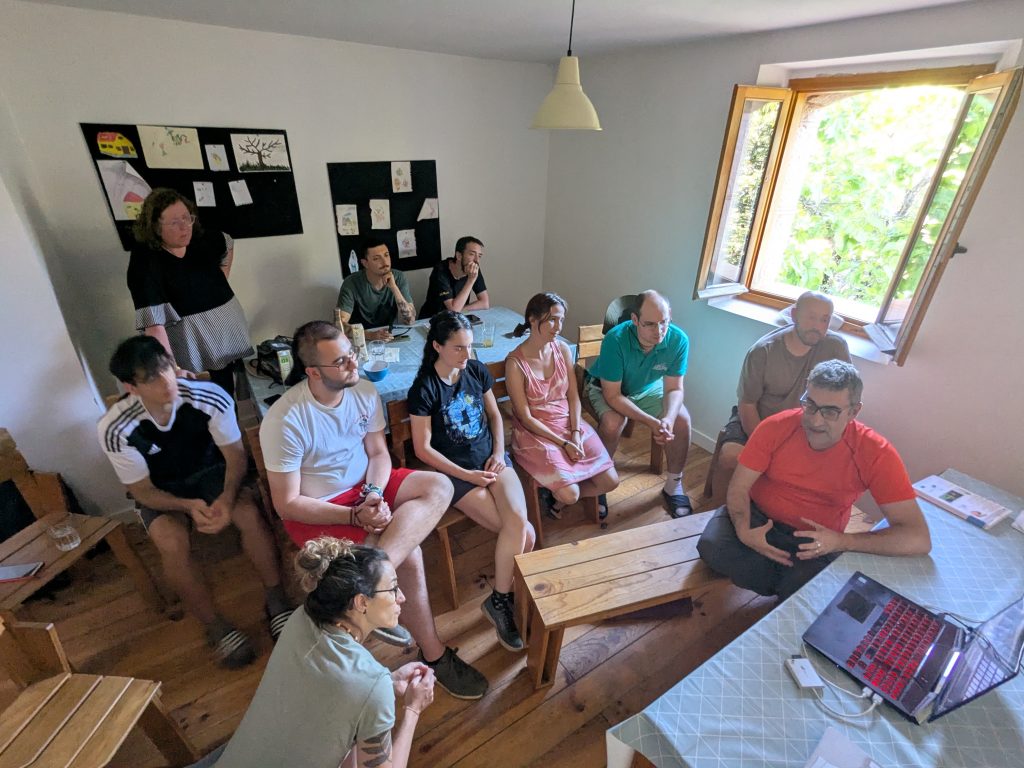
The first night excursion revealed the rich soundscape of the mountains. The rhythmic calls of nightjars and frogs blended with the delicate tones of crickets. Among the highlights was Albarracinia zapateri, a striking green endemic bush-cricket whose size and coloration drew everyone’s attention.
Day 2: Learning and Listening
The day began with an introduction to the TEOSS project, highlighting the ecological importance of the Iberian Peninsula and the need for further research on its Orthoptera. Equipped with microphones, participants began their first recordings around Fuente de la Tía Perra, where dragonflies, grasshoppers, and cicadas filled the landscape with movement and sound.
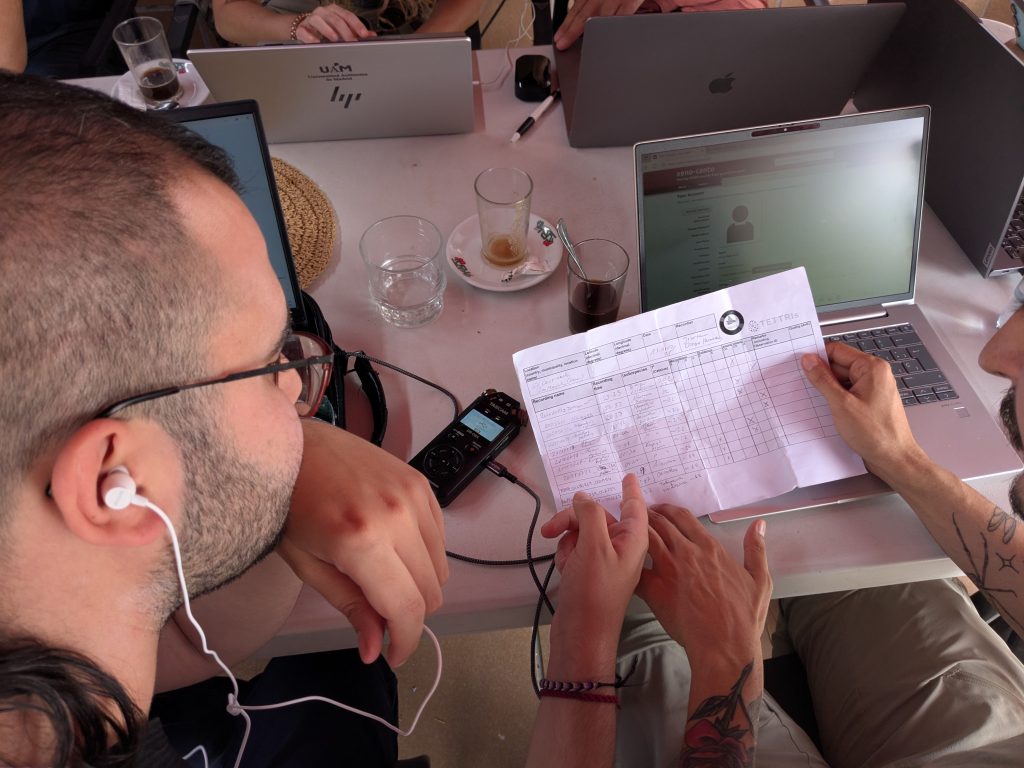
Later, they studied a fascinating video of A. zapateri courtship behavior, followed by talks on orthopteran acoustics, observation tools, and data recording methods. By nightfall, they returned to the field, where species such as Oecanthus, Platycleis, and Tettigonia enriched our nocturnal recordings.
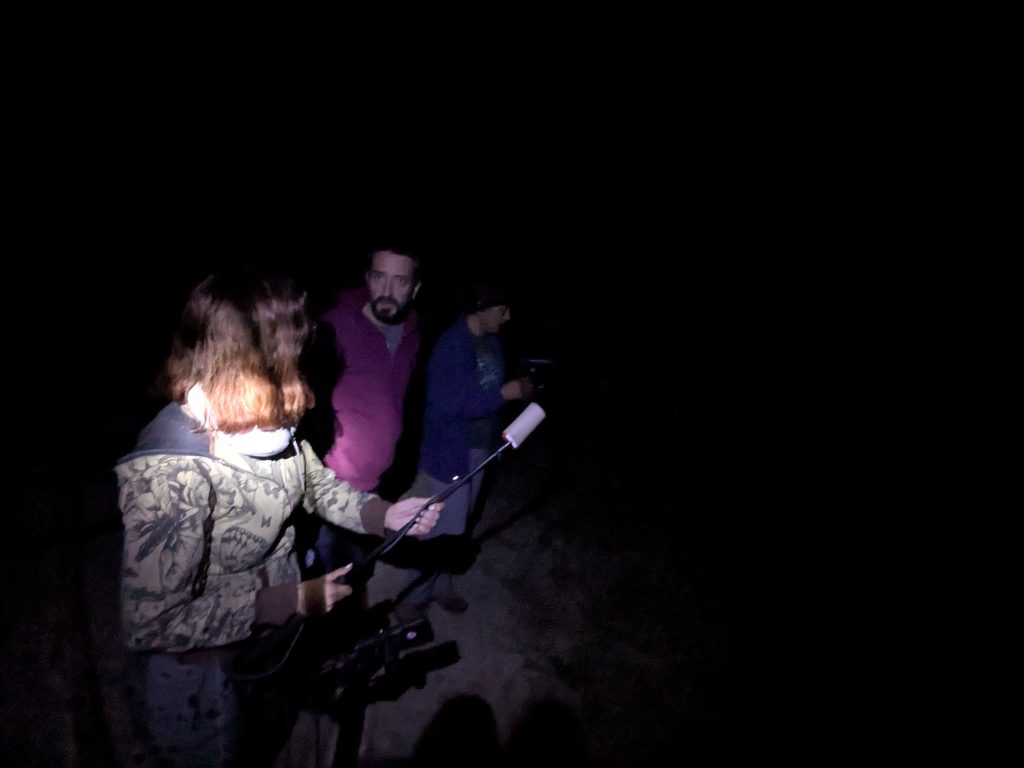
Day 3: Expanding Horizons
They shifted to the open scrublands near Las Majadas, encountering new habitats and species, including Omocestus minutissimus and Lluciapmaresius. Back at the lodge, guest speakers presented case studies on Spanish cricket distribution and demonstrated how databases and bioacoustics complement ecological studies.
That night, participants explored ultrasound recording, uncovering the hidden sound world of species beyond human hearing. Although orthopterans were scarce at the light trap, the diversity of moths caught the attention.
Day 4: Uña Lagoon and Data Processing
Laguna de Uña was the final field excursion. Despite challenging conditions with wind and fewer hygrophilous species, the discovery of a rare Petaloptila cricket rewarded them. After a picnic by the water, they turned indoors for a full afternoon of data management—synchronizing observations, organizing audio files, and uploading processed material to Xeno-Canto.
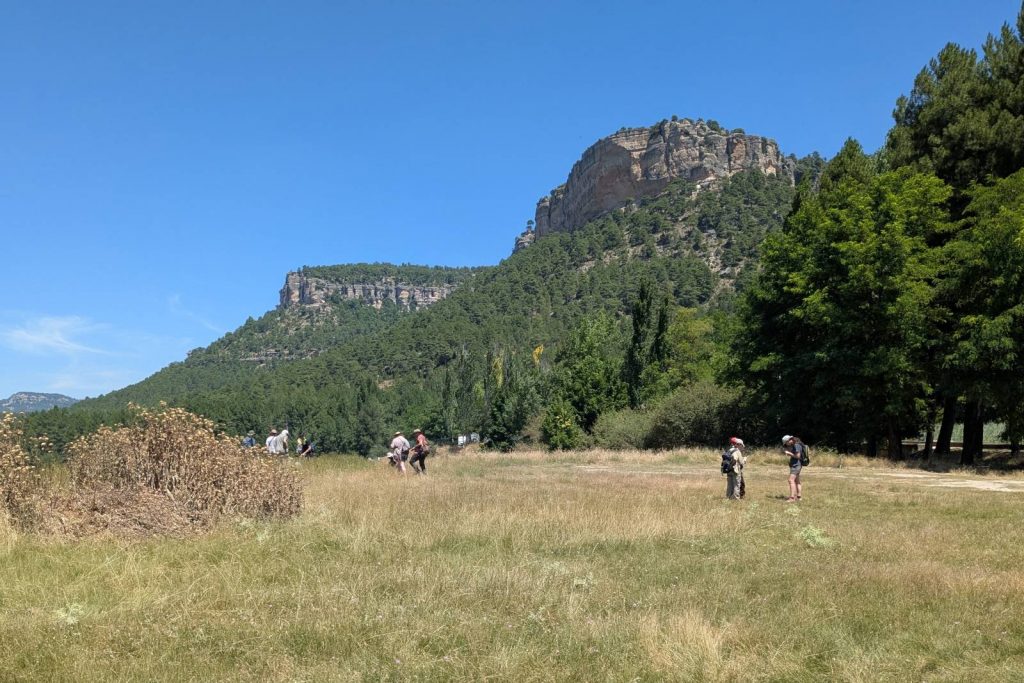
Day 5: Closing Reflections
The workshop concluded with open conversations, where participants shared personal stories, ecological experiences, and plans for future collaborations. From tales of tropical forests to Iberian highlands, the exchange highlighted the diversity of perspectives within the group.

